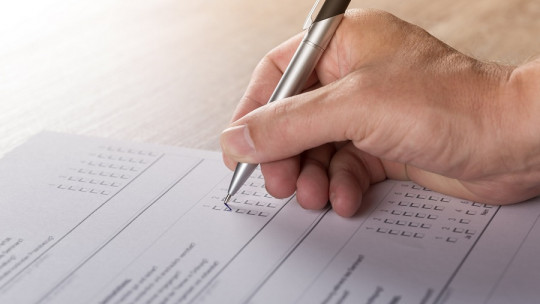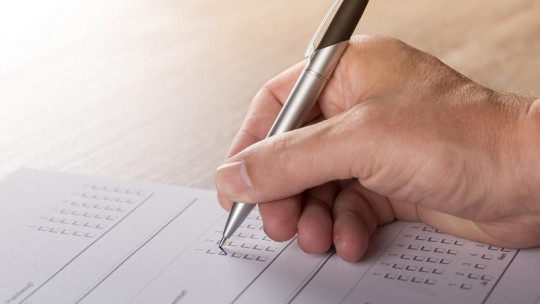Tests are scientific instruments widely used in the field of psychology in order to measure and carry out an evaluation of aptitudes, knowledge or functions. When a test measures what it claims to be, it is valid, while if it measures well, we could say that it is reliable; Both characteristics being very important for a psychological test.
Classical test theory (TCT) is that theory of psychological testing that gave rise to a very important branch of psychology, psychometrics. This theory pays special attention to achieving the greatest possible measurement accuracy or, instead, if it is not possible, obtaining the precise determination about the measurement error, which is why it is also known as “error theory.” measurement”.
In this article we will explain in greater detail what the classical theory of testing consists of in order to understand its importance within the field of psychology, but first it is convenient that we see what the origin of this theory is.
What is the origin of Classical Test Theory?
Classical test theory (TCT) It has its origins in the early 20th century, with the English psychologist and statistician Charles Edward Spearman and his research, which in some way marked the beginning of a new area within the field of psychology, psychometrics.
Psychometrics is that area of psychology in which specialists are responsible for researching theories, methods and techniques involved in measuring and also quantifying various psychological variables of the set of psychological characteristics of the human being. Within psychometrics, tests are a very important tool, as well as in psychology in general, being tests that are carried out in order to carry out the most exhaustive evaluation possible of aptitudes, knowledge or functions.
Furthermore, within psychological tests we can find those commonly known tests, of a psychotechnical or psychological nature, that are used with the fundamental objective of evaluating or studying a function, so that this type of tests have been designed to be able to make a measurement or evaluation of various psychological characteristics of people for different purposes (e.g., in selection tests for a given job).
What is Classical Test Theory?
Classical test theory (TCT) focuses especially on the achievement of the greatest possible measurement accuracy or, instead if this is not possible, obtaining the precise determination about the measurement error which is why it is also known as “measurement error theory”.
Furthermore, TCT is a theory that is used in the field of psychometrics in order to make an explanation that is as exhaustive as possible in each case about the way in which, based on a measured test value of a person, could conclude the true value of the personality trait or the characteristic manifestation of a person or aptitude that is intended to be measured.
On the other hand, within the theories of testing, the way of evaluating the quality of the tests is also influenced, as well as the way of debugging it in order to reduce the error to a minimum. For this reason, it is important to keep two concepts in mind when studying classical test theory, which are reliability and validity.
Reliability, according to test theories, is the stability or consistency of the measurements in the event that the measurement process is repeated. In other words, it would be the accuracy or reliability, assuming there were no measurement errors, with which a test is capable of determining the true value. However, reliability can only be estimated since the true values are not known.

Instead, Validity is the degree to which theory and empirical evidence support the interpretation of test scores In other words, we would say that validity is the ability of an instrument to correctly or adequately and significantly quantify the measured trait for which it was designed.
It should be noted that in the field of psychometrics we could find two main theories that have been developed with the fundamental objective of constructing and analyzing the tests. One of them, the one that marked the beginning of all this, is what we know as the classical test theory (TCT); On the other hand, we can find the second, the item response theory (IRT).
Explanation of the general process of developing a test
Now that we have briefly seen what classical test theory (TCT) consists of and what its origins are, it is time to proceed to explain What does the general process consist of on how to construct a test following the rules of TCT? it should be noted that these steps are useful for constructing performance or aptitude tests, as well as for developing inventories, questionnaires or even scales to measure attitudes, interests, feelings, etc.
1. Identification of a goal
The first step when developing a test following classical test theory would be to carefully search for the objectives for which the scores will be used: prediction, classification, diagnosis, etc. Thus It is important in this step to anticipate the decision processes in which the information that is going to be provided by the test It will be used.
The most common general categories for which questionnaires or tests are normally used would be 4: behavioral or academic evaluation, measurement of a theoretical construct, diagnostic classification or personnel classification.
On the other hand, it is very important to keep in mind some elements of the context due to their great relevance, the following being very relevant: the temporal restrictions or the time available to apply the test, the characteristics of the population to which it is directed. the test or if the administration of the test is going to be individual or collective.
2. The definition of the construct
A psychological construct, also called a hypothetical construct or psychological construct, in psychometrics is a term commonly used to refer to the hypothetical conceptual description of some psychological trait or attribute that is intended to be studied; Therefore, it is a very useful resource to facilitate the understanding of human behavior. We could say that a construct is a label used in the field of psychology to refer to a set of behaviors (e.g., personality, creativity, intelligence, memory, etc.).
Therefore, the second step when developing a test from classical test theory would be the definition of the construct that you want to measure. Once the construct has been defined, it would be time to start designing the test.
3. The test design
In this step you must do planning the evaluation instrument before moving on to writing the test items This is important because it must be guaranteed that the items reflect the objective and definition of the construct that had been developed in the previous step.
4. The wording of your items
When writing the themes, we must ensure that they reflect as accurately as possible the indicator behavior of the previously defined construct. At the same time, it is important to avoid, or at least minimize, potential errors that could contaminate the inferences that would be made from the scores obtained in the test towards that psychological construct that is being evaluated.
5. Analysis of the items
When the test items have been written, their quality should be analyzed. In the quality analysis of the items those will be selected to be included in the final version of the test To do this, we must look at those that are appropriate as a measure of the variable and also their contribution to internally forming a test in a consistent manner.
There are two statistical properties that are normally analyzed when assessing the quality of the items: the discrimination of the items and the difficulty of the items.
6. Analysis of reliability and validity
When the items have been correctly analyzed and there is a final selection of those that can form a test that is useful to measure what was initially intended, we must proceed to analyze the reliability and validity of the test, and To do this, the test must be administered to a sample of people
7. Develop rules for interpreting scores
The last step to take into account when developing a test following the rules of classical test theory would be the development of rules for interpreting scores. To do this, we can find two perspectives to follow when we want to interpret a person’s execution of a questionnaire or test: criterion-referenced interpretation or norm-referenced interpretation
If we choose the norm-referenced interpretation, we must take into account that this would imply previously providing information about the performance or execution of the test by making a comparison with the distribution of scores of a reference group or a normative sample.
On the other hand, if we chose a criterion-referenced interpretation, a person’s performance would be analyzed in relation to the criteria or standards that had previously been established regarding the execution of that test or questionnaire.









